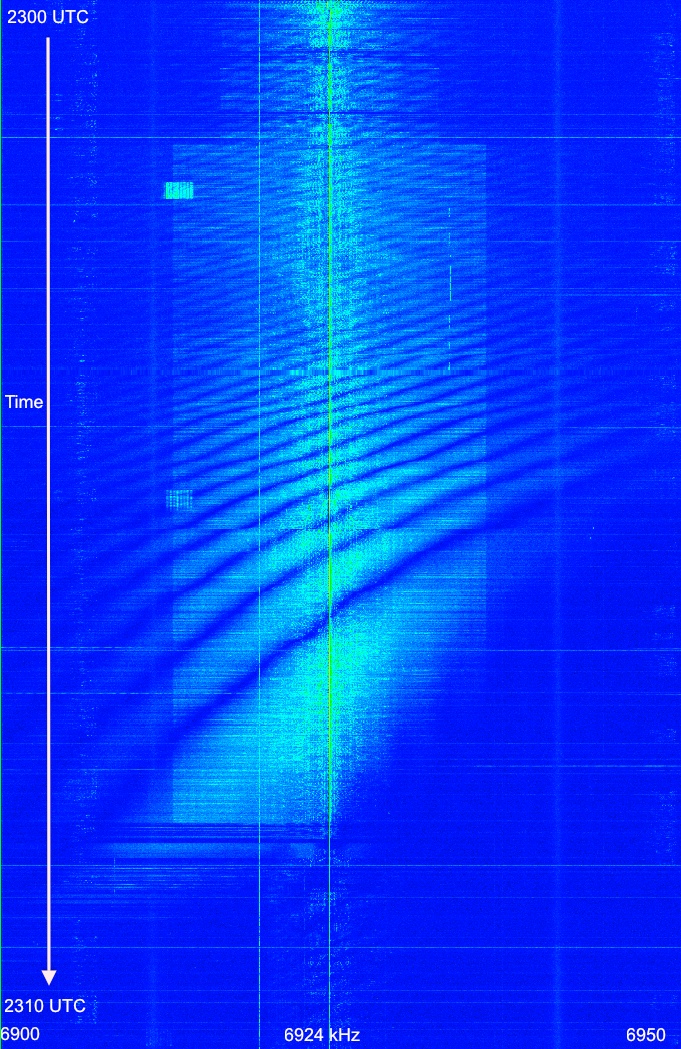I'm not really sure where to post this, as I think it is a general radio/propagation related phenomena.
I glanced at my SDR's waterfall this evening, just as the 5150 Relay Station went QRT at 2200z. And I noticed this rather interesting pattern of noise around 5100 kHz:

You can see several mostly parallel lines of noise. What immediately struck me was how they looked very similar to the selective fading pattern you see when a SWBC station "goes long", that is the MUF between you and the station goes below the frequency the station is using. This is most commonly observed on station being received by NVIS propagation. Here is a waterfall from some time ago of a station doing just that:

I went to the HFU's Propagation page
http://www.hfunderground.com/propagation and checked the foF2 graph for Wallops Island, which is nearby. foF2 is the highest frequency that can be propagation with a vertical incidence (pure NVIS, the radio waves go straight up, hit the ionosphere, then come straight down). The foF2 value had just dropped below 5 MHz:

It is interesting that this noise pattern is observed very close to the foF2 frequency. One other thing I have observed in the past with NVIS propagation and a station going long is that the signal strength of the station will peak to a very high value just before the path goes long, and the station fades out - much higher than when listening earlier. This fits with the commonly accepted principle that the best propagation (signal strength) is obtained by operating as close to the MUF as possible, without going over it. Could propagation to this noise source be optimized because foF2 was close in frequency?
Now at 2218z the noise signal is gone. foF2 has continued to drop, and is now around 4500 kHz. I don't observe a similar noise pattern there, but it is possible there is no significant noise source around that frequency? Very curious.



